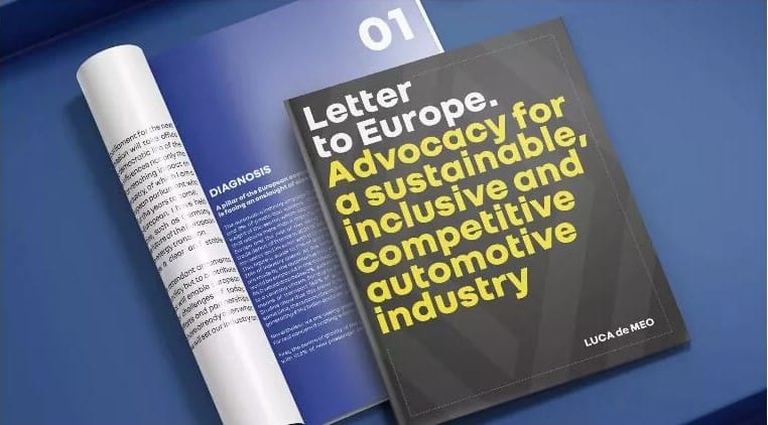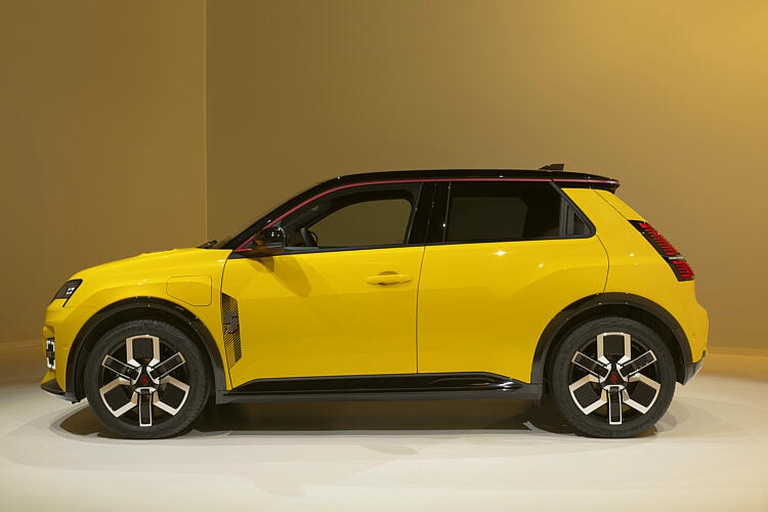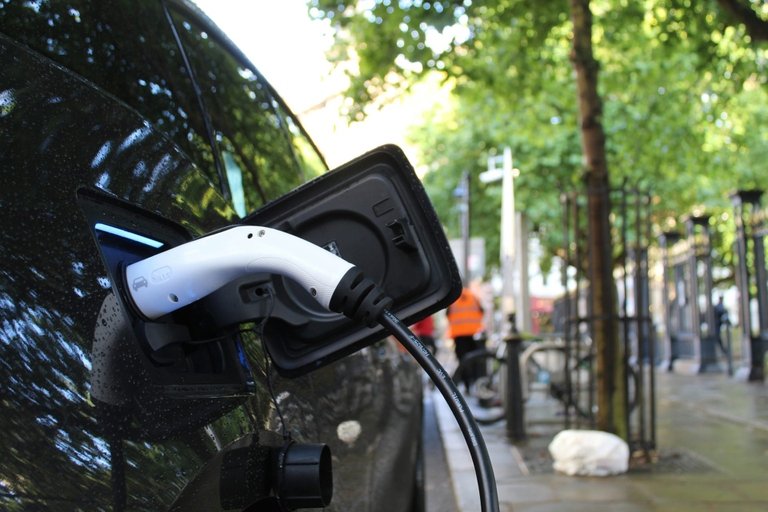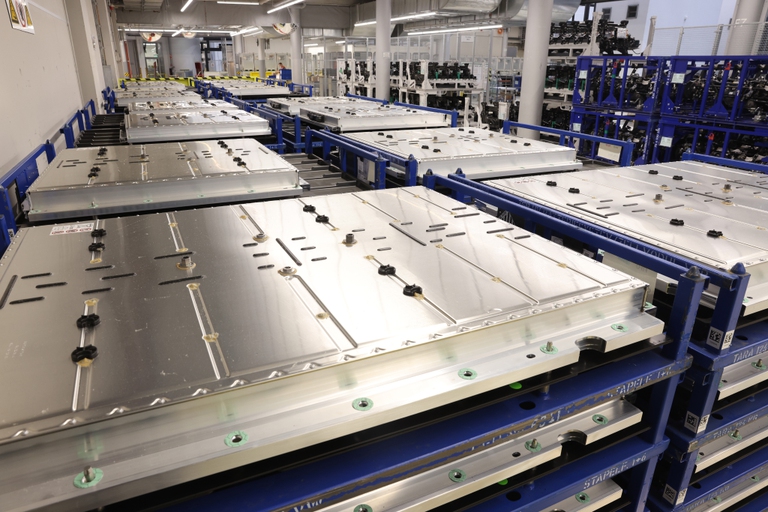https://www.lifegate.it/10-cose-da-fare-per-promuovere-lauto-elettrica-in-europa
- |
Between 6 and 9 June, the citizens of the European Union were called to the polls to choose the members of the current European Parliament.Among the issues of political conflict, theelectric car it is certainly not among the priorities for the European Union, priorities which understandably remain Russia's invasion of Ukraine, the Middle Eastern crisis and, in the background, the climate and environmental crisis which requires rapid and decisive action.In short, a series of unfortunate events that have necessarily left (yes, because even before there was no strong political commitment...) the ecological transition of the car.A transition which instead sees the European automotive industry mobilized for some time in the development of the electric car, an industry that occupies 13 million people in Europe, which represents the8 percent of GDP.
But the question now is: how will the results of the last European elections impact the Union's commitment to a sustainable mobility and more efficient?An automotive industry characterized by epochal upheavals in terms of decarbonization and digitalization, which has to contend with the rapid rise of China in the electric car segment, on the other with United States who invest in battery gigafactories already active by 2030.All this, while Europe limits itself to "regulating", as underlined by Luca de Meo, CEO of Renault group, in his Letter to Europe, sent last March to key decision makers and stakeholders across Europe.

10 projects to allow Europe to catch up on electric cars
A document of 20 pages, full of useful ideas with associated possible advantages for Europe. 10 ideas which remain largely unimplemented and which, if listened to, could allow European industry to face all the technological and geopolitical challenges of the moment. “Ambitious but concrete ideas”, as de Meo himself defined them.Let's see them.
1.Promote affordable European small cars
Encourage cooperative projects between manufacturers to develop and market affordable small cars and vans produced in Europe.At the same time, encourage consumers to purchase these vehicles through incentives and benefits such as reserved parking spaces, cheaper parking and reserved charging points.Among the advantages of adopting smaller cars are the reduction of the carbon footprint of urban vehicles, space saving and improvement of air quality in cities.In addition to the economic advantage:compact cars cost 20 to 30 percent less than average cars;they could generate greater growth for Europe and create over 10,000 industrial jobs.

2.Revolutionizing last mile deliveries
Establish a framework for the creation of new European companies specializing in electrified solutions for urban deliveries.Automakers and logistics operators would work together to identify the best possibilities.A key solution to reduce the carbon impact resulting from the e-commerce boom:CO2 emissions from small commercial vehicles are estimated at 74 million tonnes in Europe.The European electric van market is expected to grow by 40 percent per year between now and 2030.
3.Accelerate fleet renewal
Create a European system to monitor the evolution of the vehicle fleet and its emissions.A sort of European Marshall Plan to accelerate the renewal of the car fleet and thus drastically reduce CO2 emissions.A European fund that would distribute resources based on the capabilities of each country, as for the post-covid recovery plan.At a national level, incentives would be introduced for the purchase of electric vehicles, new or used.To be effective, this program should be based on a ten-year time horizon and would allow for the elimination of 1 million tonnes of CO2 by 2030.
4.Develop electric vehicle charging infrastructure and vehicle-to-grid technology
It is the role of the European Commission to develop a strategic plan for the European electric vehicle charging network.A master plan to facilitate faster creation of charging points, implement a framework that allocates green and low-cost energy to the charging network, extend the duration of charging infrastructure concessions to attract more operators and provide greater stability to the overall system, encourage the development of Vehicle-to-grid technology by defining common standards for future projects.Europe needs to install 6.8 million charging points to reach the 2030 target of reducing CO2 emissions from private cars by 55 percent.We are still far from reaching this goal:today six European countries do not have charging points every 100 kilometers and 17 have fewer than 5.

5.Achieve supply sovereignty for critical raw materials
Create a European-level organization responsible for guaranteeing the needs of sensitive raw materials, negotiating directly with producing countries.This approach should also apply to the transformation of materials (hydrometallurgy, recycling).Develop a European value chain diplomacy, aimed at guaranteeing European supply by negotiating with some countries.By 2030, only 5 percent of demand will come from European sources.China controls this sector, with 90 percent of the world's lithium refining capacity.
6.Increasing Europe's competitiveness in semiconductors
Make a strategic investment in R&D to consolidate the European leadership position (ASML) in the virtual monopoly of EUV (extreme ultraviolet lithography) technology.This technology makes it possible to produce smaller and more powerful microchips.The goal is to meet the needs of all industries, and in particular the automotive sector.Europe should use this model to encourage the emergence of new semiconductor leaders, both by strengthening existing companies and creating new ones.

7.Standardize the “software-defined vehicle”
Create the conditions so that car manufacturers can design software-defined vehicles (Sdvs, i.e. cars managed by a single, updatable operating system, modeled on a computer or smartphone, ed), at reasonable prices, by pooling some developments and setting standards.As in China, hidden components could be shared by all manufacturers.The challenge for Europe:acquire expertise in what will account for 40 percent of a vehicle's value by 2030.The global software market will be worth $100 billion by 2030.Cooperation between European manufacturers would allow them to gain sovereignty and competitiveness in the field of technologies.
8.Promote the emergence of a European champion of the industrial metaverse
Europe already has an excellent level of manufacturing production, R&D and logistics.The goal is now to make a qualitative leap into the 21st century by standardizing our approach.As?Creating a European champion of the industrial metaverse, capable of providing solutions to the challenges of the digitalisation of industrial processes (design, production, logistics, etc.).Cooperation initiatives could be launched between manufacturers and technological players with skills in the cloud, augmented reality, artificial intelligence and the Internet of Things.This project requires governments to direct investments towards leading European companies in the sector, in order to develop a pool of skills, create cloud infrastructures in Europe and define common cybersecurity standards.

9.Unify battery recycling
Pool battery waste management.This goal will be achieved by developing cooperation between industrial partners in order to create recycling experts for each battery technology.Facilitate the development of battery recycling projects.Develop partnerships in Europe with those who own these technologies, including the Chinese.By 2030, the share of electric vehicles in car sales will rise from 8 to 55 percent.At the same time, the percentage of rare minerals consumed by the automotive industry will explode:it will increase 5 times for cobalt, 7 times for lithium and we will need 8 times more nickel than we currently have.Every year 11 million vehicles reach the end of their life.By recycling them, we can recover enough steel to produce 8 million new cars and enough plastic and copper for 5 million new cars.
10.Enhance the potential of hydrogen
Adopt technological neutrality for hydrogen, and include light mobility in projects.Develop a master plan that identifies the most promising areas and coordinates actions across Europe.Concentrate efforts in the most relevant areas, correlating hydrogen pipelines and refueling stations, coordinating the creation of hydrogen hubs to be built near green energy sources, creating hydrogen distribution networks, approaching potential buyers.Hydrogen is particularly advantageous for heavy vehicles and buses and, more generally, for all vehicles that have to travel very long distances.
